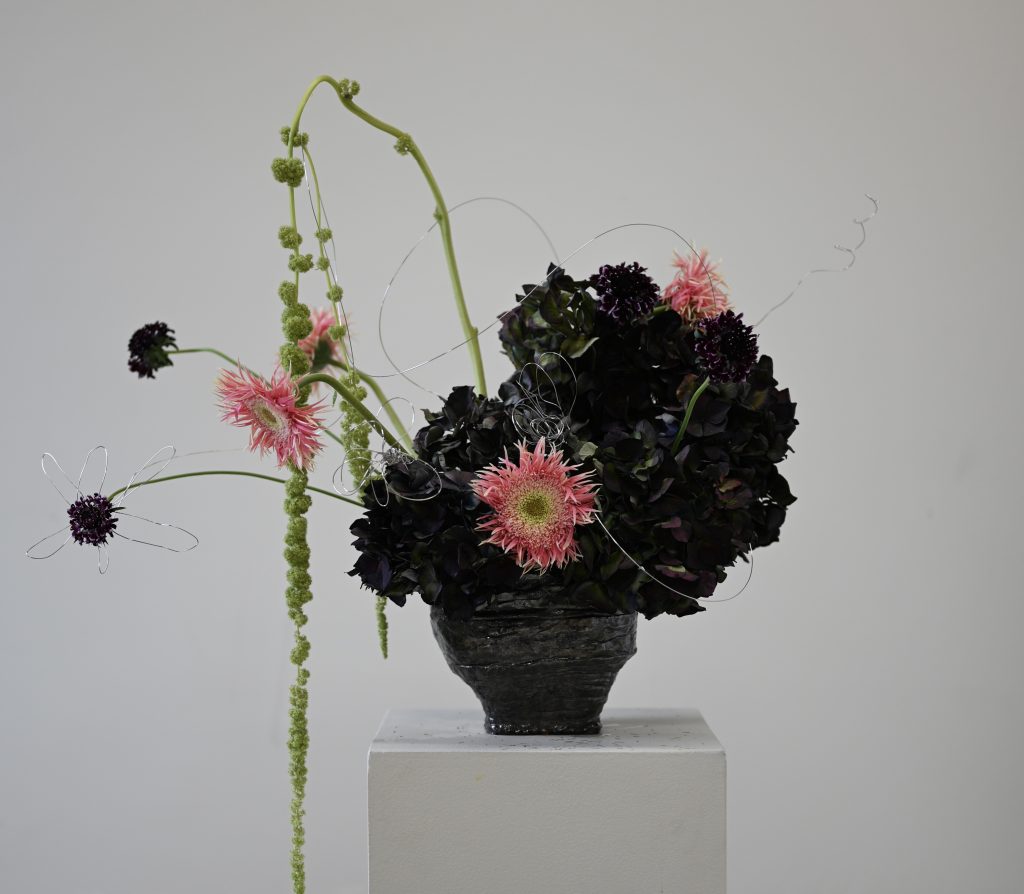Studio Visit: AVO, Brooklyn
Uncut, hand-dyed leather rugs inspired by everyday items through the lens of anthropology

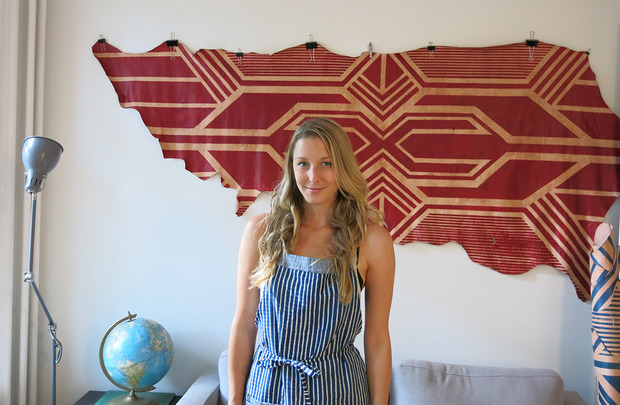
In the living room of a brownstone apartment on a tree-lined block in Brooklyn, designer Brit Kleinman uses non-toxic dyes to stain leather for a collection of striking rugs, which combine modern pattern-making with ancient materials and techniques. After graduating from the Rhode Island School of Design, Kleinman spent a decade designing bags for the likes of Samsonite, Shinola and Jack Spade. But her own work reflects her uniquely academic approach, which is chiefly inspired by anthropology and the various ways in which different cultures use objects. Kleinman is quick to point out that the most seemingly pedestrian items make for the best stories to tell through design. This was clear when we came across her work at the Sight Unseen OFFSITE, and so we recently stopped by her charming makeshift studio to hear more about the processes behind her hand-painted leather rugs.

What prompted you to begin painting on leather?
I’ve been working with leather for a long time, just in the jobs I’ve had. Working in that environment, there was always a lot of leather lying around and I just started on the side. I had some leather scraps at home and had been researching leather-working techniques; leather molding, leather painting. Leather painting is actually one of those things that’s been around for a very long time and every culture throughout human history has had some form of it. I kind of got really hooked on this thing called a Parfleche—I discovered it when I was in New Mexico. They’re raw hide envelopes that the Plains Indians used to put on horses and they’re all painted with really bold graphic patterns. That sort of sparked the idea.
I started painting with acrylic paint. I just sort of came home and started painting the backside of the leather, because I thought it would be really cool if we could make these forms with it painted on the inside. Obviously the acrylic didn’t work [laughs]. So I did a bit of research and found leather stain and it works a lot like wood stain, so it really infuses into the skin.
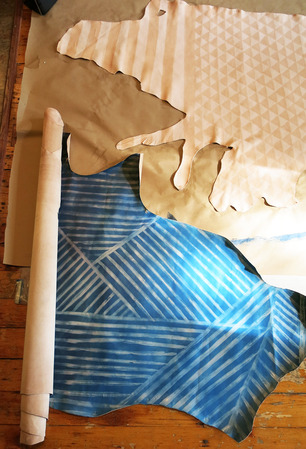

What kind of leather are you using?
I had one skin and my first pattern—the blue and white one—but the leather is really stiff and it’s more like a tooling belt leather. So when I set out to do rugs, I needed to resource a much softer leather. The leather is a Vachetta, which basically means it’s a tanned hide, but it’s completely raw—it’s not dyed with any color. There are no additives whatsoever and it’s all veg process so it’s not toxic. The Vachetta darkens over time, with sunlight or the oil of your hands. So that’s what I liked about using that as a base not only because it takes the stain so well, but because it will evolve with the user.
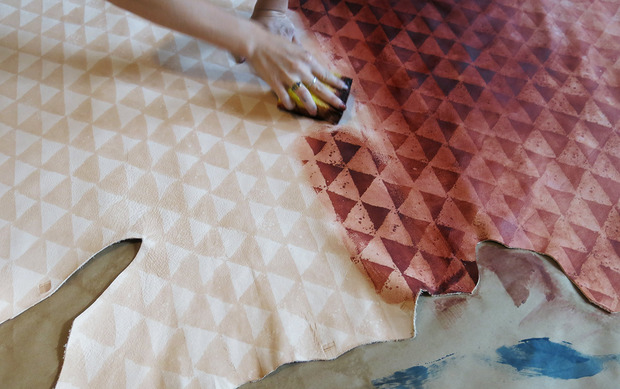
There’s a real juxtaposition between the organic character of the leather and the geometric quality of your designs.
What you see on the floor today, I’m just starting to do a few patterns that are a little bit more fluid and organic—kind of taking a nod from block-printing. I really wanted to launch with the really bold graphic patterns because I wanted to play off of that juxtaposition: what you think of a leather rug versus what this is and really pushing it to a more modern place. I think there’s this sort of organic modernism that’s happening right now and people are interested in these really natural materials. I love working with materials that have a longstanding history and culture to them, but really trying to take it in a more modern way.
Your approach to design seems academic, even anthropological. Would you agree?
It definitely is. Even the name itself, AVO, represents that. It’s a name that’s been in my wheelhouse since 2006 when I took a trip to Guatemala. I was working with artisans there at a market and it was so amazing and overwhelming. I took a photo of a man carrying a huge sack of avocados and I’ve always sort of timestamped that in my head as the moment I realized how design and culture intersect. I became fascinated by looking at one object or one way people use an object in a lot of different cultures.
Everything I do, whether it’s lighting or a rug or a bag, I really dive headfirst into it and into the anthropological side. Whether that’s a material or the way we carry things. I’m obsessed with just looking at how people in different cultures carry things. The mundane things that you wouldn’t necessarily think about—making that a story.
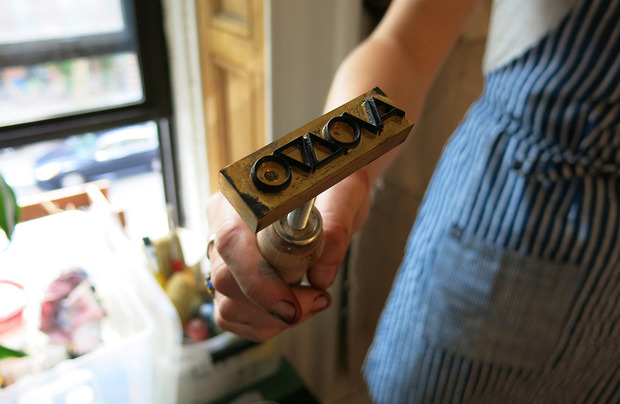
And that extends into the patterns?
With a lot of the patterns I do try to make it referential of a lot of the cultures that I’m researching, but not to the point where you can put your finger on it. I have this great book, “The Worldwide History of Dress” and it’s exactly as the title suggests. It goes through and looks at fashion in a very functional and anthropological way, ranging from the textiles to patterns to cuts and how it all evolved. Just starting research in a certain culture, some of the patterns that come out; it’s a great resource. I’m most heavily influenced by the Southwest and American Indians, but then there’s Africa, South America, Asia—there’s a whole range.
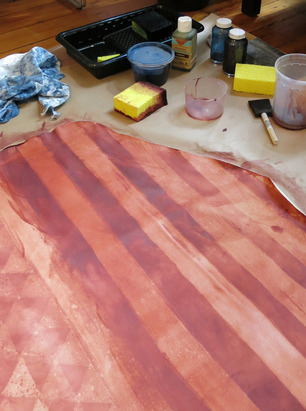

I’m definitely not shy that these are animals, I think that’s a really important part of this. A lot of people forget that leather is from an animal.
I very rarely map out a pattern before I start, especially with the geometric ones. I maybe start with a pencil sketch but I mostly get inspired with the overall shape of the hide first, then I’ll make one bold move and go from there. Depending on what the overall shape of the hide is, I try to play off of that. I’m definitely not shy that these are animals, I think that’s a really important part of this. A lot of people forget that leather is from an animal. Having worked in the bag industry for over a decade it’s remarkable how often people forget. It was my first experience working with cow hides. It’s not like canvas where it’s a rectangle. I don’t cut the hides, I leave the hides exactly as I get them.
Any plans to extend the collection?
I’m working on some lighting ideas for the next collection. I don’t want to be limited to rugs, they were great to launch with and I’ll continue doing them, but I also want to take the skins and make objects out of them. I like working with pattern and form. So whether that’s graphic pattern and the outline form or pattern-making and structural form. For me it’s all about that dynamic of a flat substance turning into a three-dimensional form or playing off of the really graphic pattern in the outline form.
Photos by Hans Aschim


